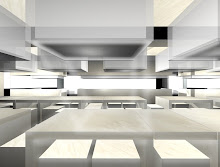Extract from Lecture Series header :
What is sustainability?
What are we sustaining?
Who is being sustained?
Can architecture be sustainable?
Probing into nature, density, tectonics, environment, growth, urbanism, and craft, architecture’s complex relationship with its ability to sustain is brought to bear. Four distinct lectures will open up, challenge, and enrich the way we think through sustainability, to challenge our assumptions of architecture and its seeming ability to change our environment.
The National University of Singapore (NUS) School of Architecture recently organised the 'Sustain/Ability' lecture series which aims to steer the discussion away from more feature-related notions of sustainability. Current industry practices of accrediting green and energy consciousness with a meritocratic system of rewards are given new insights towards developing more strategic and critical thought processes to redefine sustainability's long term goals i.e. the ability to sustain.
The terminal lecture in the series was delivered by Winy Maas of MVRDV. Maas started the lecture by aptly positioning the notion of sustainability amid the gloomy backdrop of the looming economic crisis and global recession.
To Maas, sustainability starts with the first production of space, advocating density and spatial efficiencies at the forefront of any conceptual thought. Architects are seen as agents of space - our contribution is to rethink space as a viable tool to drive and to initiate economic, cultural and social agendas. He refers to MVRDV's book KM3, describing various formal strategies (stacking, bending, lifting etc) employed in their projects and manipulating parameters of form, coupled with comprehehsive research and information gathered through the collaborative efforts of research institutes like T?F (The Why Factory). MVRDV showed how generic design ideas can be applied to specific contexts globally and how projects are constantly moulded to suit new situations. Many of the projects involved the decision making of influential stakeholders, clients and politicians, and MVRDV describes these negotiations with as much ease as one might think of their formal experimentations.
On a larger note, he ended the lecture by strongly encouraging the audience and local community of architects, designers and other professionals to rise above the norm, to challenge the existing. As a prolific architect himself, perhaps his most significant contribution has been a redefination of the role of the architect, not as mere creators of buildings, but as active politicians of space and urban development, able to dream and construct new manifestos of change. Only then can architecture be sustainable, where the creation of a new role beckons an increasingly contentious global outlook.
Where are our own spacefighters?




No comments:
Post a Comment